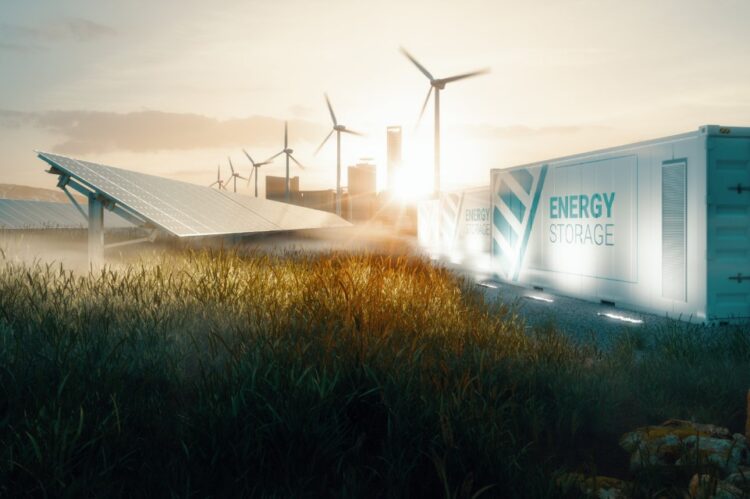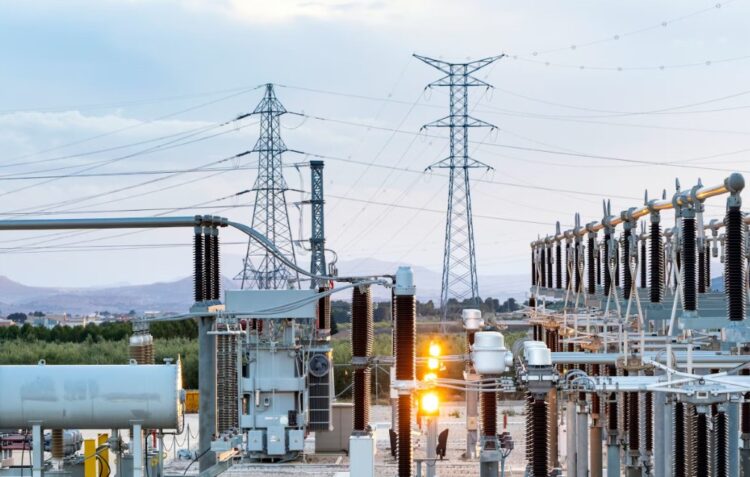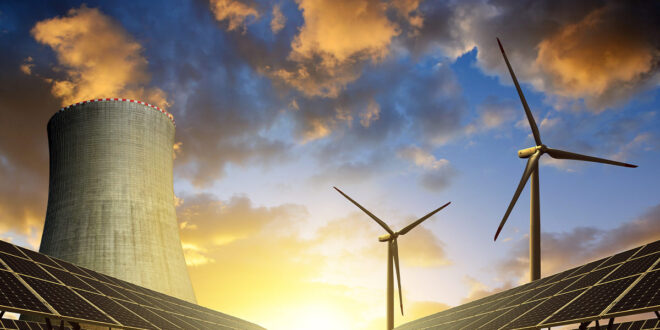Fossil fuels, encompassing coal, oil, and natural gas, are ingrained in global energy systems due to their consistent output and established infrastructure. Their high energy density and reliability have historically outweighed environmental concerns.
In contrast, renewable energies like solar and wind are inexhaustible and environmentally benign but face challenges in reliability, energy density, and existing infrastructure compatibility.
Although technological innovations are bridging these gaps, transitioning to renewables demands significant investment, infrastructure modification, and a shift in energy policies.
Intermittency ─ The Solar and Wind Energy Challenge
The principal challenge of solar and wind energy lies in their intermittency. These sources depend heavily on weather conditions and time, leading to fluctuations in energy production. This variability poses significant hurdles to maintaining a consistent and reliable power supply.
To address this, advanced storage solutions and grid management strategies are essential. The development of predictive analytics to forecast energy production and smart grid technologies to distribute it efficiently is critical.
The integration of these renewables into the existing grid requires innovative solutions that can adapt to their unpredictable nature, ensuring a stable and continuous power supply.
Storage Solutions ─ Storing Renewable Energy for On-Demand Use
Effective storage solutions are pivotal for renewable energy’s viability, especially to counter its intermittent nature. Current technologies like lithium-ion batteries, pumped hydro storage, and hydrogen fuel cells are at the forefront of this effort.
These solutions aim to store excess energy generated during peak production times for use during low production periods. However, challenges in efficiency, capacity, cost, and scalability still hinder widespread adoption. Improvements in battery technology, along with cost reductions and increased life spans, are crucial for making renewable storage viable on a large scale.

Grid Integration ─ How to Balance the Power from Renewables
Integrating renewable energy into the existing power grid is a complex task that requires balancing fluctuating renewable outputs with consumer demand. This integration involves not only technological advancements in smart grid technologies but also a rethinking of grid management and operation.
Smart grids, which use digital technology to monitor and react to changes in usage and production, are crucial in this respect. Additionally, demand response systems, which encourage consumers to adjust their energy use based on supply availability, can help mitigate the effects of renewable intermittency.
Cost Considerations ─ Analyzing the Economics of Renewable Energy
Evaluating the cost implications of renewable energy involves considering not only the upfront capital costs but also long-term operational and maintenance expenses. Initially, renewable technologies, especially solar and wind, faced higher costs compared to fossil fuels.
However, with technological advancements and increased production, these costs have been decreasing steadily. Government subsidies and incentives have also played a crucial role in making renewables more economically viable.
Despite these advancements, the total economic impact of transitioning to renewables includes grid modification costs, storage technology investments, and potential impacts on existing fossil fuel industries.
Upgrading Energy Transmission Infrastructure
Transitioning to renewable energy requires significant upgrades to the existing transmission and distribution infrastructure. Current systems are primarily designed for centralized, predictable power flows from large fossil fuel plants.
Renewable sources, often decentralized and variable, necessitate a more flexible and resilient grid. This involves not only physical infrastructure upgrades but also advancements in grid management technologies and regulatory frameworks.
Upgrading the grid to handle the intermittent nature of renewable sources, while ensuring reliability and minimizing transmission losses, requires substantial investment. Additionally, expanding grid access to remote renewable generation sites poses logistical and financial challenges.

Addressing Renewable Power Density
The lower energy density of renewable sources compared to fossil fuels presents a significant challenge. Energy density refers to the amount of it stored in a given system or region of space and is a critical factor in the efficiency and feasibility of energy sources.
Fossil fuels, with their high energy density, allow for easier transportation and storage. In contrast, renewable sources like solar and wind require larger physical spaces to generate equivalent amounts of it.
This disparity affects everything from the design of renewable energy systems to land use and resource allocation. Addressing the density dilemma is crucial for the broader adoption of renewable energy technologies.
Environmental Considerations in Green Power
While renewable energy is often touted for its minimal environmental impact compared to fossil fuels, it is not without its challenges. The manufacturing, installation, and disposal of renewable energy systems involve environmental considerations.
For example, the production of solar panels and wind turbines requires raw materials and power, often derived from fossil fuels. Additionally, concerns about land use, habitat disruption, and the lifecycle environmental impact of renewable systems need to be addressed.
Mitigating these impacts requires advancements in materials science, recycling methods, and more efficient manufacturing processes. A holistic approach to environmental impact assessment is essential for truly sustainable renewable energy development.
Technological Progress ─ Key to Success in Renewables
Renewables’ future depends on technological progress. Enhancements in efficiency, cost, and integration of renewable technologies are crucial. Innovations in panel and turbine designs, storage, and smart grids are vital.
Emerging areas like advanced photovoltaics, offshore wind, and next-generation batteries are promising. Digital advances like AI and IoT for grid management and forecasting will also play a significant role.

Role of Policy and Regulation
Policies and regulations are critical in shaping the renewable landscape. Incentives, subsidies, and regulatory frameworks can speed up the adoption of green technologies and the shift away from fossil fuels. Supportive policies for research, grid upgrades, and project implementation are key, as are regulations promoting a competitive, innovative power sector.
Global Energy Transition
The shift towards renewables is a response to climate change and dwindling fossil fuel resources, involving technological, socio-economic, and policy changes. Developing countries face the challenge of aligning growth with sustainable practices.
International cooperation, tech transfer, and financial aid are crucial for a successful transition, offering opportunities for economic development and innovation.
Overcoming Barriers for a Sustainable Future
A sustainable energy future requires overcoming current barriers to renewables. Addressing intermittency, and power density issues, improving storage, upgrading infrastructure, and ensuring cost-competitiveness are critical.
Environmental, technological, and policy aspects are vital in this transition, calling for a combined effort from governments, industries, and consumers. The future lies in not just replacing fossil fuels but in creating an efficient, equitable global power system.
 Hi Boox Popular Magazine 2024
Hi Boox Popular Magazine 2024



